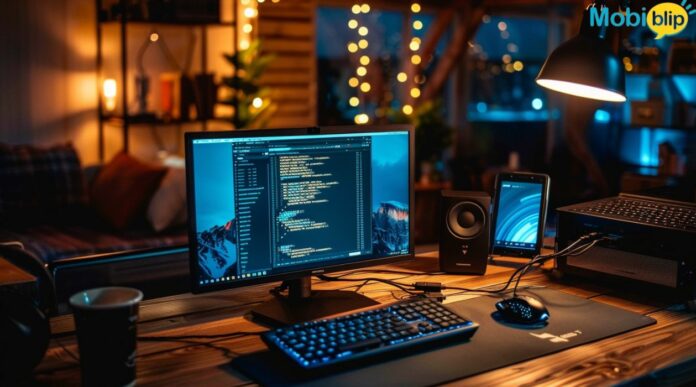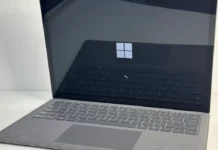
The Best Laptops for Programming in 2024

The right laptop can be your best friend (or worst enemy) as a programmer. Whether you’re crafting beautiful websites, building complex applications, or crunching massive datasets, your laptop’s performance directly impacts your productivity and efficiency. Let’s delve into why choosing the right machine is crucial and explore the key factors to consider for different programming tasks.
- Efficiency: A powerful laptop translates to faster compile times, smoother debugging, and quicker responsiveness when working with large codebases. This translates to getting more done in less time.
- Productivity: A sluggish machine can lead to frustration and bottlenecks in your workflow. Waiting for code to compile or applications to load can seriously hinder your progress.
- Futureproofing: Programming needs can evolve quickly. Choosing a laptop with strong core specifications ensures you have the power to handle more demanding projects as your skills grow.
Key Features to Look for
Now that we understand the importance of choosing the right laptop, let’s dissect the key features that influence a programmer’s experience:
Processor: The Brain of Your Machine
The processor, or CPU, is the core of your laptop, handling all the calculations and instructions. For programmers, two key factors to consider are:
- Multi-core CPUs: Modern processors have multiple cores, allowing them to tackle multiple tasks simultaneously. This is crucial for running demanding programs, compiling code, and multitasking efficiently. Aim for at least a quad-core (4 cores) processor.
- Clock Speed: Measured in GHz, clock speed refers to the number of cycles the processor can complete per second. Higher clock speeds translate to faster processing. However, core count often plays a bigger role in programming tasks.
RAM: Keeping Things Running Smoothly
Random Access Memory (RAM) acts as your computer’s short-term memory. It holds frequently accessed data and program instructions for quick retrieval. Programmers should prioritize sufficient RAM for a smooth workflow:
- 8GB RAM: This is the current minimum standard for most programming tasks. It allows you to run essential tools and IDEs (Integrated Development Environments) comfortably.
- 16GB+ RAM (Ideal): If you work with large datasets, complex simulations, or memory-intensive applications, consider 16GB or even 32GB of RAM. This provides a significant performance boost and allows you to run multiple programs simultaneously without lag.
Storage: Speed Matters – SSD vs. HDD
The type of storage you choose significantly impacts your laptop’s overall responsiveness:
- Solid State Drive (SSD): SSDs offer blazing-fast read/write speeds compared to traditional Hard Disk Drives (HDDs). This translates to faster program launches, quicker file access, and snappier overall performance – a huge benefit for programmers.
- HDD: While HDDs offer larger storage capacities at lower costs, their slower speeds can lead to frustrating delays when loading programs and working with large files. If budget allows, prioritize an SSD for your programming machine.
Keyboard: Your Gateway to Code
Programmers spend a significant amount of time typing code. Here are some features to look for in a programmer’s keyboard:
- Backlighting: Essential for low-light environments and long coding sessions.
- Tactile Feedback: Keys with a satisfying keystroke provide better typing comfort and accuracy.
- Durability: Programmers type a lot! Look for a keyboard built to withstand frequent use.
Graphics: When Does It Matter?
For most programming tasks, integrated graphics built into the processor are sufficient. However, some areas like game development, data visualization, or machine learning can benefit from a dedicated Graphics Processing Unit (GPU).
Dedicated GPU: If your programming ventures into graphics-intensive areas, consider a laptop with a dedicated GPU for improved performance in these specific tasks.
By prioritizing these key features, you can choose a laptop that empowers your programming journey and fuels your productivity.
Laptops for Casual Programming
The world of programming welcomes beginners with open arms! If you’re just starting or have light programming needs, you don’t necessarily need a top-of-the-line machine. There are plenty of affordable laptops that can handle basic coding tasks and introductory programming languages like Python, Java, or HTML/CSS.
Here’s what to look for in a laptop for casual programming:
- Processor: A recent Intel Core i3 or AMD Ryzen 3 processor with at least 2 cores is sufficient for most basic programming tasks.
- RAM: 8GB of RAM is the sweet spot for casual programming.
- Storage: While a 256GB SSD is ideal, a 128GB SSD can work if you plan to store your code on external drives.
- Keyboard: A comfortable keyboard with good key travel is essential, even for casual programmers.
Here are a few well-regarded laptops that offer excellent value for casual programming needs:
Acer Aspire 5
This is a well-rounded budget laptop with a good balance of performance and affordability. It typically comes with an Intel Core i5 processor, 8GB of RAM, and a 256GB SSD. The backlit keyboard makes it comfortable for coding sessions, and the overall build quality is solid.
Apple MacBook Air M1
While typically more expensive than Windows laptops, the Apple MacBook Air M1 offers exceptional performance for its price point. The M1 chip delivers snappy performance and excellent battery life. It’s a great choice for those who prefer the macOS ecosystem and prioritize a sleek, portable design.
Lenovo IdeaPad Flex 3 Chromebook
Chromebooks are a great option for casual programmers who primarily work with web-based development tools and cloud storage. Chromebooks tend to be very affordable and offer long battery life. However, they typically have lower processing power and can’t run traditional desktop software.
These are just a few examples, and there are many other laptops out there that can be suitable for casual programming. Remember, the most important factors are to prioritize your needs, set a budget, and do your research before making a purchase.
High-Performance Laptops
For programmers tackling complex projects that involve heavy workloads, a regular laptop just won’t cut it. Here’s what to look for in a high-performance laptop:
- Processor: Muscle matters! Aim for a powerful processor with at least 6 cores and high clock speeds. Look for Intel Core i7/i9 processors or AMD Ryzen 7/9 series.
- RAM: Don’t skimp on memory! 16GB is a good starting point, but 32GB or even 64GB is ideal for handling massive datasets and running multiple demanding programs simultaneously.
- Storage: Speed is key! Prioritize a large and fast PCIe NVMe SSD for blazing-fast storage and program loading times.
- Graphics: A dedicated GPU is a must for tasks like game development, machine learning, or working with 3D graphics. Look for Nvidia GeForce RTX or AMD Radeon RX series graphics cards.
- Cooling: High-performance laptops generate a lot of heat. Ensure your laptop has a robust cooling system to maintain optimal performance and prevent overheating.
Here are some of the best laptops known for their muscle and reliability in handling heavy-duty programming tasks:
Apple MacBook Pro 14-inch (2023)
Equipped with Apple’s powerful M1 Pro or M1 Max chips, this MacBook Pro delivers exceptional performance. It boasts excellent battery life and a beautiful high-resolution display. While on the pricier side, it’s a fantastic choice for programmers who value the macOS ecosystem and top-notch performance.
Dell XPS 15 (2022)
A perennial favorite among Windows laptops, the Dell XPS 15 offers a gorgeous OLED display, a wide variety of powerful configuration options, and excellent build quality. It’s a versatile option that can handle demanding programming tasks while still being relatively portable.
Microsoft Surface Laptop Studio
This innovative laptop from Microsoft boasts a unique hinge design that allows the display to fold into a tablet mode. It offers powerful performance with the latest Intel processors and Nvidia GeForce RTX graphics options. The high-resolution display with a 120Hz refresh rate is a treat for both work and creative tasks.
MSI Creator 17
This powerhouse laptop is specifically designed for creative professionals and demanding workloads. It features top-of-the-line processors, powerful Nvidia GeForce RTX graphics, and a large, vibrant display. The beefy cooling system ensures optimal performance under heavy loads.
Lenovo ThinkPad P1 Gen 5
Renowned for its durability and reliability, the ThinkPad P1 Gen 5 is a mobile workstation built for heavy-duty tasks. It offers a wide range of configurable options, including powerful Intel Xeon processors, Nvidia RTX graphics, and dazzling OLED display options. This laptop is a true workhorse for programmers who need exceptional performance and a no-nonsense design.
Remember, these are just a few examples, and the best high-performance laptop for you will depend on your specific needs and budget. Carefully consider the type of programming you’ll be doing and prioritize the features that are most important for your workflow.
In Crux
Selecting the right laptop is an investment in your programming journey. By understanding your needs and prioritizing the features that matter most, you can find the perfect machine to fuel your creativity and productivity.
With the right laptop by your side, you’ll be well-equipped to conquer any coding challenge and transform your ideas into reality. Happy programming!
How much did you like our detailed Best Laptops for Programming: Top Picks for 2024? Also, please share these Blogs with your friends on social media.
Related Blogs









